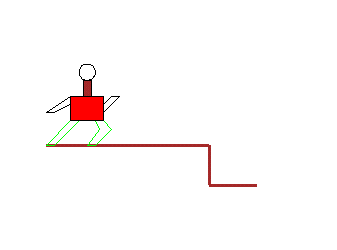

SEE-Math
Texas A&M University
Cryptography
Papanikolas, El-Guindy
The students learn cryptography by studying successively more complicated encryption algorithms. The first method is
- Standard Cryptograms: Each letter is simply replaced by another letter.
In subsequent methods, each letter is converted to a number and converted back at the end. And to simplify computations, many methods are initially done with a 5 letter alphabet, A=1, D=2, I=3, M=4 and blank=0, to spell things such as "Madam Im Adam". The second method is
- Additive permutation: A constant k (between 1 and 4) is added to each number and reduced mod 5. To decrypt the message the constant k is subtracted. Equivalent you can add the constant 5-k. The kids need to understand that 5-k is the additive inverse of k. So they work out the addition table mod 5.
The third method is
- Multiplicative permutation: Each number is multiplied by a constant k (between 1 and 4) and reduced mod 5. To decrypt the message the kids need to understand multiplicative inverses mod 5. So they work out the multiplication table mod 5 and observe that each number has a unique multiplicative inverse mod 5. So to decrypt the message each number is multiplied by the inverse of k mod 5.
Next the students are asked what changes if one uses a 6 letter alphabet. By looking at the multiplication table, they discover that not every number has an inverse and this is because 6 is not prime. So they conclude you need to work with a prime modulus.
Finally the students are asked how to make it more difficult to decrypt the message. Hopefully, they conclude that you should use a larger prime modulus and encrypt several letters at a time.
© Philip B. Yasskin, 2005.
Last updated Jan 22, 2005

